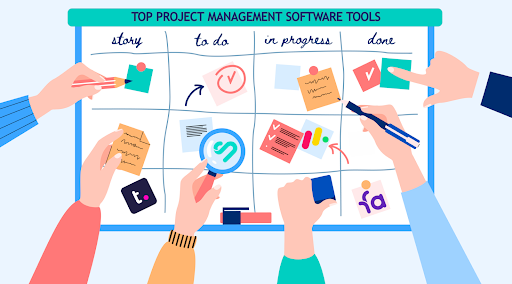In the realm of project management, there exists a plethora of tools and programs aimed at aiding in maintaining oversight, distributing tasks, planning workflows, and successfully concluding projects. During periods of impending disorientation, one might be tempted to create an overview of all open tasks in Excel. In this blog post, we’ll examine the pros and cons of this practice. The following explains why project management tools like Jira are significantly more powerful tools, and Excel should only be used as a supplement at best. Jira is used as an exemplary professional project management tool in the following.
Why Are We Tempted to Use Excel as a Project Management Tool
There are situations in the course of a software project where it seems sensible to gain an overview with the help of an Excel spreadsheet. For a brief moment, this can even work, as Excel (or Google Sheets) does indeed offer a number of advantages:
- Excel is quickly set up: Open, new file, header. Let’s get started.
- Familiarity: Many people have worked with Excel at some point in their careers and may even have extensive knowledge of it.
- Good Performance: Changes to an Excel or Google Sheets table are immediately visible, and there is typically no loading time.
- Overview: Zoom out and small row heights allow keeping an eye on others while working on tasks or topics.
The combination of these advantages can lead project participants, who may not yet be sufficiently familiar with Jira, to use Excel as a project management tool. However, when the tables are not only used for personal overview but also shared and forwarded, the trouble often begins.
Disadvantages of Excel
Before we address the strengths of Jira, there are also a few disadvantages of Excel itself.
- Access Rights: It may happen that project participants do not have access to the created tables, thus withholding relevant information from them.
- Lack of Dynamics or Merge Conflicts: This enormous disadvantage arises when Excel tables are sent, edited, and sent back. In the meantime, the original document may have been edited again, and these changes need to be transferred to the edited document to avoid losing information. This disadvantage can be circumvented by using a collaboratively edited Google Sheets.
- Tracking Changes: Especially when an Excel spreadsheet is edited by several people, forensic research is necessary to understand who made which change or deletion. Errors are difficult to detect and correct as a result.
- Concept: Excel is not designed as a project management tool and excels in spreadsheet and analysis.
Why We Ultimately Have to Transfer Everything to Jira Anyway
In our comparison of Excel and Jira, we assume that a project in Jira is already set up and intended to be used for planning and implementation. So, it was not initially planned to manage the entire project in Excel. This would also not be a good idea. Excel offers the quick possibility of a snapshot with subsequent overview of all tasks and topics. However, due to the mentioned disadvantages and the following advantages of Jira, it becomes clear that the project cannot be completed with the help of Excel. Therefore, it is advisable to refrain from creating an Excel spreadsheet with subsequent transfer back to Jira. Instead of this effort, it is recommended to use Jira in such a way that an equally good overview is possible, and furthermore, to benefit from its additional advantages.
Strengths of Jira as the Chosen Project Management Tool
The greatest strength of Jira is its multidimensionality. This feature means creating ticket details and delving into deeper details than a table could represent.
Other strengths include:
- Adding Attachments: A picture is worth a thousand words. Screenshots, scribbles, schematic drawings – all of these can work wonders when it comes to explaining complex relationships. Especially the preview function in Jira makes adding attachments a valuable feature, especially compared to Excel.
- Comments: Each ticket in Jira has its own comments column. It is clear who wrote a comment and when. When going through an implementation process, this is a “must-have” for quickly capturing the current status.
- Board View: In the backlog view, a filterable list of tasks can be displayed, while in the Kanban view, the status of a task is separated and dynamically adjusted by columns.
- Time Tracking: By logging the time spent on a task, the effort of a task can be traced. Each collaborator only needs to pay attention to their own efforts, and they are clearly added up. In addition, the logged time is automatically deducted from a previously entered estimate, making the remaining effort visible at a glance.
- Dynamic Linking: Dependencies between tickets (tasks) can be linked in Jira, so a preview of the linked ticket is displayed. This allows the relationship to be understood more quickly, often without even opening the relevant link.

Jira was specifically developed for project management. Therefore, it can be assumed that further developments of this project management tool are tailored to the needs of project managers.
Conclusion
In the preparatory phase of a project, when it comes to calculating project components, Excel is a blessing. It is suitable for creating ticket shells, which are later transferred to the project management tool via bulk import. However, for the implementation of a project and the detailed tracking of the numerous tasks, Excel can only serve as a supplement at best. For a clean documentation of progress and actual effort, a dedicated project management tool is indispensable – which Jira provides.






